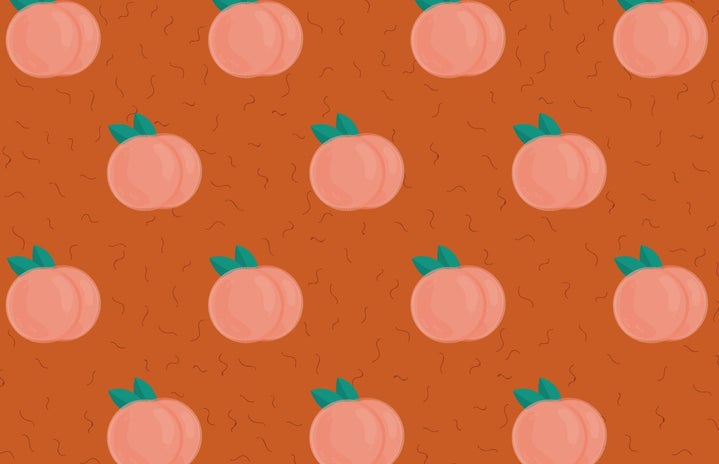

Although it’s less talked about than the hair on other parts of the bikini area, butt hair is a pain in the derrière. If you’re wondering what the scientific reason behind butt hair is, you can pretty much thank puberty. The butt area is a normal place where hair can grow, and body hair is meant to help protect from infection and foreign particles. But don’t worry—removing hair on your body is totally common and safe if you do it correctly.
At the end of the day, it’s your body, and obviously it’s completely up to you whether you want to leave the hairs be, or wave (more like wax) them goodbye. But if you are looking to deal with the hair on your behind, I have the go-to guide for everything you could ever want to know about the hair down there.
I talked to Sharon Acheson, the Head Esthetician and Manager of Bare Wax Bar, which is home to Vancouver’s Brazilian Waxing Experts. She gave me the inside scoop on dealing with butt hair. The process can be pretty similar to removing hair on other parts of your body, but make sure to be extra careful since that’s probably one of the (if not the) last places you’d want razor burn or a cut.
Professional waxing
Waxing is one of the best ways to remove hair in the bikini area, and that includes your butt. Acheson recommends waxing, but says it’s best to leave it to the professionals. “Get it professionally done because your hair grows in all different directions, and it’s awkward to wax back there and do it yourself. You can also break the hair and then ingrown hairs can grow, and it’s hard to treat them back in that area,” she says.
If you’re worried about pain, here’s some reassurance. When compared to a bikini wax, Acheson says that, “It doesn’t hurt as much there. The hair there isn’t as coarse as everywhere else and the nerve endings are more insensitive, so the skin is able to get waxed and not feel uncomfortable.”
Amber, a college student, prefers Brazilian waxing and says it actually doesn’t hurt as much as people would think. “It’s really quick and the pain goes away quickly. It’s simpler and it lasts longer. It depends on the person though. My sister doesn’t like it.” So if you’re used to getting bikini waxes, the butt area will hurt even less! But if you thought a bikini wax was way too painful or you have a low pain tolerance, you definitely want to factor that into your decision. If you’re worried about pain but still want to wax, try sugaring or hard wax—those are the less painful waxing methods.
Different types of body wax
Sugaring
This is best if you have sensitive skin because it only removes dead skin cells. It’s all organic and made just with sugar, water, and lemon. “It works on any skin condition, such as eczema, and will not upset the area,” says Acheson. “It is a medium temperature and not hot, so there is no risk of burning.” The downside? It’s not as effective in removing short hairs.
Hard wax
This is similar to sugaring and it’s also great for sensitive skin or anyone prone to irritation. It’s a relatively less painful method of waxing. However, hard wax can leave you with some tiny hairs because it’s not as effective as wax strips in removing short hairs.
Wax strips
These are quick and efficient because they get all the teeny tiny hairs. With this method, Acheson says you won’t be left with any short hairs, which can sometimes happen with sugaring and hard wax.
If you’re going in for a professional bikini wax, Acheson says you can usually get the butt area included, depending on the wax package.
Waxing at home
If you are going to wax at home, the most effective method is to apply it in the direction of hair growth and remove in the opposite direction. Try wax strips for face and bikini.
Before you wax, make sure the hair is around 1/4 of an inch, or else hair removal might not be effective. Also exfoliate and clean the area with some body wash or soap beforehand. Test a bit of the wax on your skin to make sure the temperature isn’t too hot or cold. The temperature of the wax needs to be just right to be effective. If it’s too cold the wax won’t work properly and if it’s too hot, you could burn yourself. When waxing, Acheson says that “You need a good firm pull on the skin”—so try to hold your skin taut.
After your wax, you can easily remove any wax residue and moisturize your skin with baby oil or soak a cotton pad in olive oil.
Related: These 7 Wellness Products Were Made for a VSCO Girl, But They’ve Actually Helped Me Manage Self-Care in a Real Way
Shaving
If you want, shaving is also an option—but it’s not necessarily the best one. It can be much harder to reach certain areas on your behind, so use a mirror to help. Wash the area with soap and exfoliate before you reach for the razor. Be extra cautious as you obviously don’t want a cut or nick there. And beware! “You can get a shaving rash from it because obviously that area is quite sensitive and moisture changes. If you cut yourself, you can be quite sore and irritated,” says Acheson.
For Taylor*, a college student, shaving down there can be super itchy if not done right. “Shaving can itch like crazy, and tons of my friends agree. It can rash, it can itch, and I’ve had times when it was irritated for days.” Taylor’s advice? “Use lots of shaving cream and you want the razor to be good quality. As long as you’re careful, you probably won’t get a lot of itching by using shaving cream and getting a sharp razor.” Also make sure to shave in the direction of hair growth.
Alex*, another college student, recommends adding lotion (any kind that you’d usually use on your body) to the area after shaving. “I always put lotion down there right after shaving so that it doesn’t get irritated. It also helps keep it hygenic. I’d say do it two to three times the first day after shaving.”
Another thing to consider? Shaving will only last a day or two. “At first shaving doesn’t come back for a while, but then it ends up being a day or two”, says Taylor. “You have to shave more frequently as time goes by. Shaving is sort of tedious and it’s sort of difficult to just have to do it so frequently.”
But there are pros! Or else why would so many people continue to reach for the razor? Some of the benefits of shaving include that it’s budget-friendly, easy to do at home and can be convenient once you do get the hang of it. So if you think the pros outweigh the cons, go for it! But as we’ve said, be extremely cautious and generous with the shaving cream. You can always try using a tweezer to remove hairs you missed with the razor, but this can be a lot more difficult to navigate when you’re dealing with your behind.
Laser hair removal
If you want a more permanent option, consider laser hair removal. Laser treatments reduce hair growth to non-existent, so you’ll never have to worry about butt hair removal again! However, it is on the costly side and requires more of a commitment to sessions. “I used to be a laser therapist and it’s very stubborn for that area,” says Acheson. “It can be a bit painful and the hair doesn’t go as well as it should. Laser is expensive.” According to the American Society of Plastic Surgeons, on average, laser hair removal is a whooping $235 per session—and keep in mind it usually takes at least an average of three to seven sessions to be permanent.
Aftercare
After your wax, Acheson recommends using a dry bikini brush on the skin the day after because it helps to get rid of any dead skin cells.
You can even take steps to prevent ingrown hair in the future by trying an ingrown hair treatment. It removes dead skin, calms the skin and frees the hair before it becomes ingrown, preventing future ingrown hair irritation.
If and how you want to remove hair is up to you and you alone, so choose the method that makes you most comfortable! There are so many different ways to remove hair, so if one method doesn’t work for you, no worries—there are others out there and you have the tools to find the one that helps you feel your best.
*Name has been changed






































